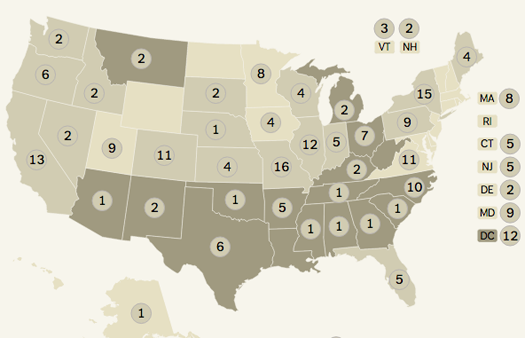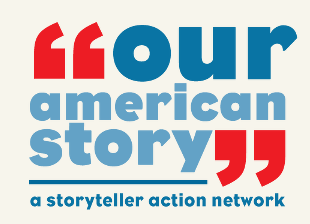
Screenshot of Barbara of Lancaster, Pa., sharing her experience with SNAP in a video On Half In Ten’s Our American Story project website.
When you hear the voices, see the faces and read the stories, poverty is no longer an abstraction.
Listen to Stephenie of Flint, Mich., tearfully explain in a video how her family struggles to make ends meet even though she’s working and the family receives help from the Supplemental Nutrition Assistance Program (SNAP), Head Start and the earned income tax credit.
Barbara of Lancaster, Pa., tells of skipping meals so her children could eat at a time in her life when she wasn’t receiving SNAP benefits. She speaks of conservative lawmakers seeking to drastically reduce funding for SNAP: “I know if they knew my little ones, if Congress saw the faces of all the little children that they’re actually turning down by cutting the SNAP funding, they wouldn’t do so.”
Lori of Brandywine, Md., says she has to choose between medications and utilities, including heat for her home. She works part-time, and her Social Security Disability Insurance goes only so far. She says eligibility for other benefits, including SNAP, healthcare and help with utilities, should be based on net, not gross, income.
Such stories are among some 300 submissions – some written, some videos – solicited as part of an anti-poverty campaign led by the Coalition on Human Needs, an umbrella group with about 100 anti-poverty organizations, and Half in Ten, which comprises CHN, the Leadership Conference on Civil and Human Rights, an umbrella group with about 200 civil rights organizations, and the Action Fund at the Center for American Progress, a progressive think tank.
The campaign, called “Our American Story,” brings together storytellers who have experienced poverty, along with some service providers and community leaders, in an effort to shed light on poverty and how government programs have helped make a big difference in the lives of those struggling with it.
The Our American Story website features not only the videos and written contributions but also an interactive map showing where the stories originated and stats on poverty.

Katie Wright – a policy analyst who, like all full-time employees at Half in Ten, is based at the Center for American Progress Action Fund – said the grassroots effort began in 2011 during budget battles in which conservatives sought to cut or cap spending for key safety-net programs.
Half in Ten, which seeks to cut the 2010 poverty rate in half by 2020, hopes that showing the stories of the poor will underscore the need for government programs that help them.
U.S. Census figures show that in 2012, more than 16 million American children, or nearly 22 percent, lived in poverty. (The 2012 poverty threshold was $23,492 for a family four.) The overall poverty rate stood at 15 percent, of 46.5 million people, living at or below the poverty line, statistically unchanged from 2011.
By contrast, 12.1 percent of Americans lived in poverty in 2010 and 10.8 percent in 2000, while the percentage of children in poverty has remained near or slightly above 20 percent since 1981.
“We decided we needed to do something to elevate those voices in the debate and give them a seat at the table because so often the decisions that would affect their lives were being made by folks who weren’t consulting them or who were not informed by their circumstances,” Wright told Youth Today.
“We tried to collect stories from people across the country who could speak to how a lot of these federal programs which are under attack had helped them make ends meet and helped them rise out of poverty.”
Indeed, many of those featured on the site have overcome poverty.
“A lot of the people who relied on food stamps [now known as SNAP] or other types of assistance at a given point in time are no longer receiving those benefits anymore because they were able to secure that better job or get the housing they needed to provide them stability,” Wright said.
The Our American Story campaign solicits stories through a link on its website as well as through its vast network of anti-poverty and civil rights groups.

Stories not only appear on the site but are also used in advocacy efforts such as Half in Ten’s annual report and in social media and blog posts and have been quoted by members of Congress in testimony on the House floor. Our American Story has connected some of the storytellers with the media, and they have appeared on “CNN Money” and in “The Nation.”
Some storytellers also appeared in the campaign’s mock trailer of the movie “The Hunger Games” called “The Real Hunger Games.” The mock trailer intersperses statistics on poverty with footage from a House Budget Committee news conference and stories from the campaign.
The House recently passed a farm bill that over the next 10 years would cut $40 billion from the SNAP program, which serves families with 22 million children.
Tara, a storyteller and former SNAP recipient who’s now an anti-hunger activist and law school student living in Pittsburgh, Pa., appears in the trailer.
“I have gone hungry for a whole weekend so that my child can eat,” she says.
The mock trailer, which exemplifies the campaign’s effort to reach beyond the traditional anti-poverty community, has drawn 44,000 hits on YouTube, Wright says.
In the latest phase of the effort, Our American Story plans to focus more attention on following up to see how those who submitted stories are doing, and the storytellers might have opportunities to participate in social media campaigns, write op-eds or testify before Congress.
The campaign goes a long way toward countering misinformation – like claims there’s rampant fraud, abuse and waste in safety-net programs – while showing anybody can suffer from poverty.
“We all have families, we all have friends and neighbors who are going through [poverty]¸” Wright said, “and we’re kind of all in it together and it’s a very quintessentially American thing to help others in need and to be there for your neighbors and community members and family members who are falling on hard times.”
All images screenshots from the Our American Story website.





























